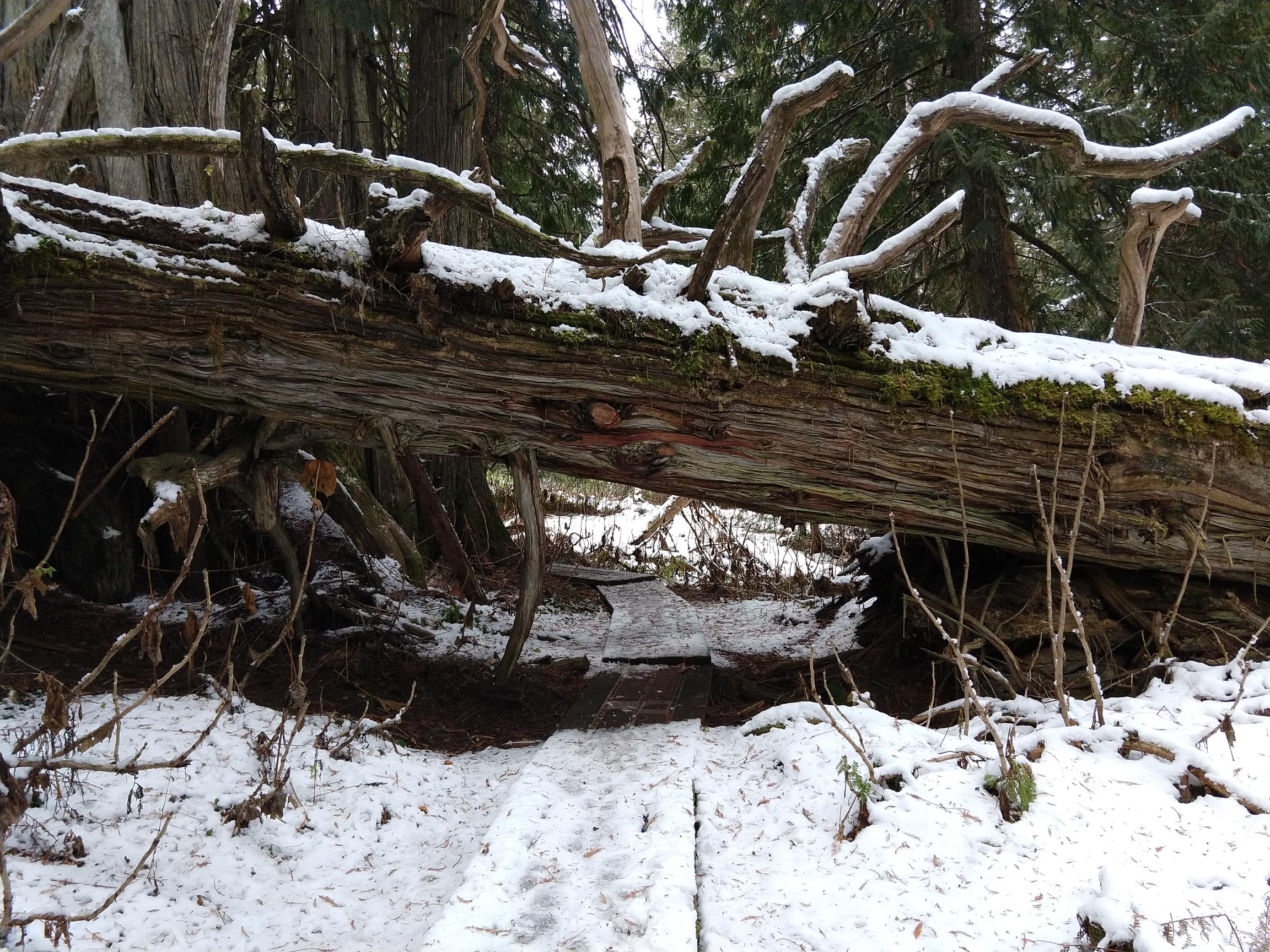Trip to the Chun T'oh Whudujut Park
A place I wanted to visit since hearing about it for the first time is the Chun T’oh Whudujut Park, a part of the world’s only boreal inland rainforest, made accessible for visitors.
The park is situated about halfway between Prince George and McBride, and Ben, who did not want to miss out on visiting it as well, before starting his new job in Vancouver, quickly agreed to go to this unique place with me.
Because the primeval forest there is unique.
The position on the western side of the Rocky Mountains sees to rainy summers and snow-heavy winters that keep the forest so wet that even if a tree is hit by lightning, only this tree and none of the neighbouring ones catch fire - if even! There are a few ginormous trees that have lost their crown more than once in their long life and have regrown replacement crowns. The most eye-catching of these trees the rangers named “Treebeard”, after the Lord of the Rings Ent. Because the new crowns don’t grow straight up out of the broken tip, but come from important side branches that then turn skywards and start growing in grotesque and bizzare ways.
The oldest western red cedars growing in this forest cannot be properly dated, because their cores have fouled away (and thus, created hibernation spots for black bears and grizzlies). But the dimensions of those trees are unimaginable and not really captureable in normal pictures.
The biggest of the trees in the park has a diametre of more than 5 metres and is estimated to be up to 2.000 years old. The estimation was made partially with the help of lichen and moss growing on its trunk - and there are a whole lot of them in the forest. Because of that, some of the trees look like bathed in gold dust, others like they are growing immense algal beards.
However, this forest, too is suffering greatly from human influence, especially under (disrespectful) visitors. Every few metres along the little more than a metre wide wooden path, signs beg people not to leave the planks, to protect the sensitive ground ecosystem. Yet all the bigger trees have been put behind fences, because visitors wanting a picture with those trees stepped onto their roots or touched their trunks, destroying the protective moss and lichen layer.
For some of those ancient trees, the rangers are not sure if they will survive the destruction of their sensitive root vegetation. Next to the strongest affected cedars, plaques have been put up, showing pictures of how the trees looked before they opened the park, a few years ago, and how they look now, during summer time.
But despite the very visible human destruction, the forest with its frosty-snowy atmosphere was a real spectacle, and the sight of those majestic old trees fills me with reverence, and thankfulness that logging work had been stopped in this part of the forest in the 90s, to protect the beautiful primeval forest for future generations.
Pictures to both trips can be found in my gallery, at “Reisen - Trips” in the corresponding folder.
travelling · country · aboutme